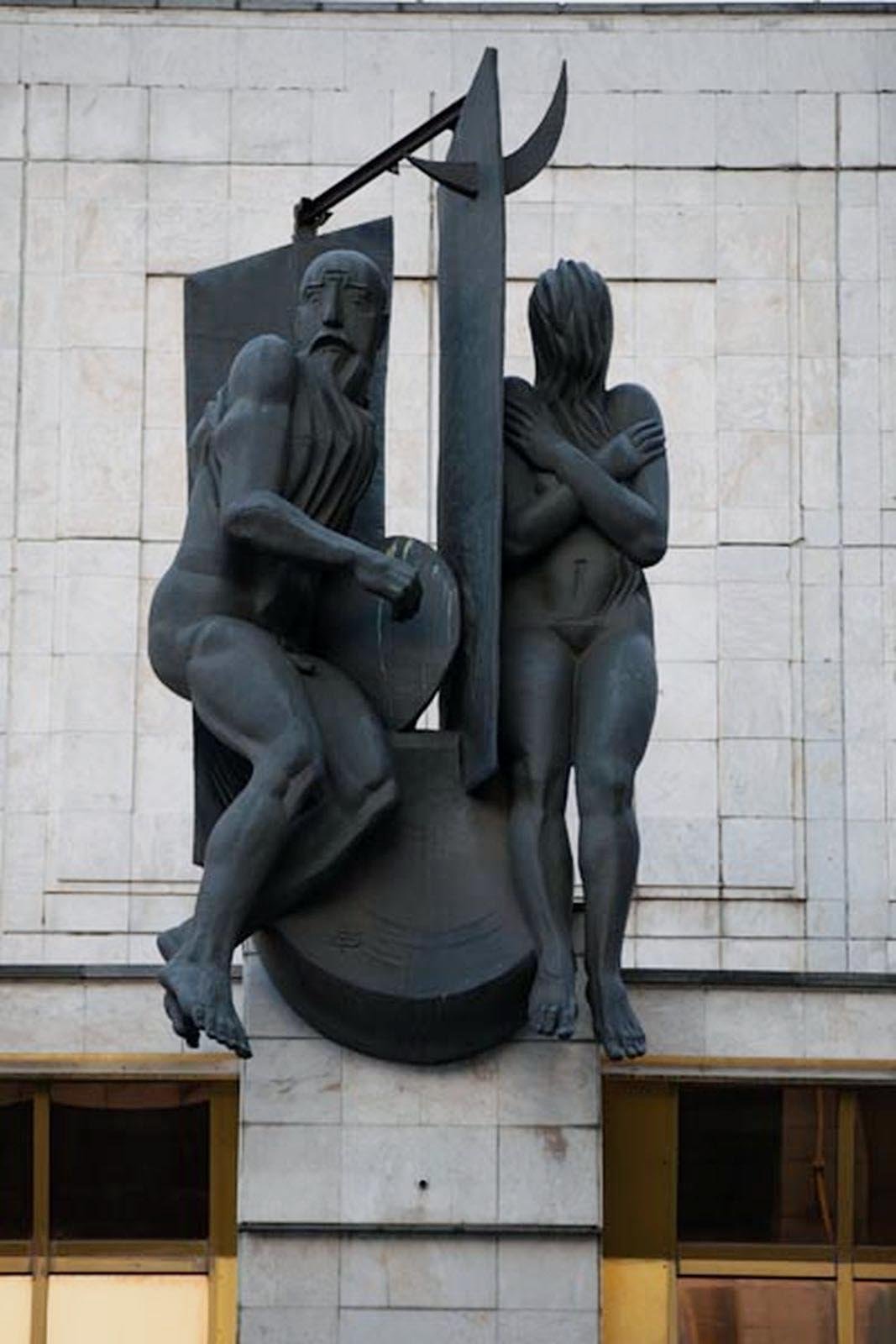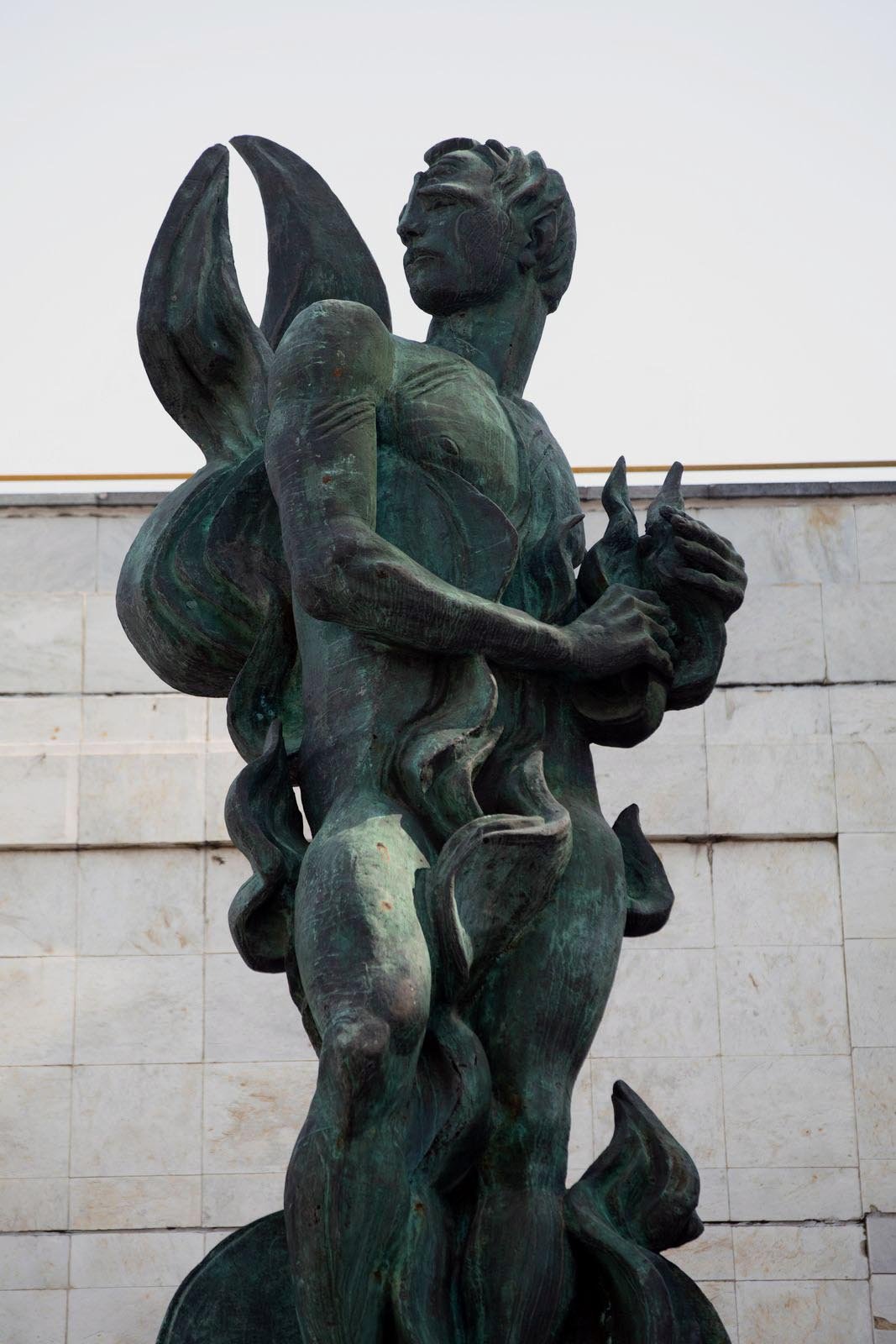Allegories Of Space And Time
1987-93
Georgy Frangulyan with architects Yuri Platonov,
A. Batyreva, L. Barshch, S. Zakharov, A. Zvezdin
Cast bronze, dimensions variable
Commissioned by the Russian Academy of Sciences Presidium complex of the Academy of Sciences, Moscow
Maria Burganova, a professor of monumental and decorative sculpture at the Stroganov where Fangulyan studied, characterized the academy’s curriculum as “unique, timeless.” Architecture was in service to the spiritual resilience of the postwar Soviet state, and sculpture was in service to architecture.
Frangulyan’s work Allegories of Space and Time, which he designed and cast for the Presidium of the Russian Academy of Sciences (RAS), is a clear example of a collaborative, if not uniquely symbiotic, relationship between the two disciplines.
Situated atop Sparrow Hills (formerly named, until 1999, Lenin Hills), the complex is an iconic feature of Moscow’s skyline. It rises above the Moskva River atop an elevated foundation. The buildings are clad in ceramic cement panels covered in marble, a material symbolic of purity and, more importantly, immortality. Elsewhere, the complex’s glazed surfaces are made of anodized aluminum and tinted glass that have a golden hue depending on natural light.
Two 22-story towers anchor the complex. They are topped with decorative latticework cubes—or “brains”—that were designed by Mstislav Keldysh, the former president of the academy. These structures are very much like the open geometric sculpture that American sculptor Sol LeWitt began making around the same time.
To create his allegories, Frangulyan mined both mythology and classical sculpture, which he studied at the Stroganov. Four individual bronze figures—representing earth, water, fire, and air—are also the four central elements of Aristotle’s alchemical theories about matter.











